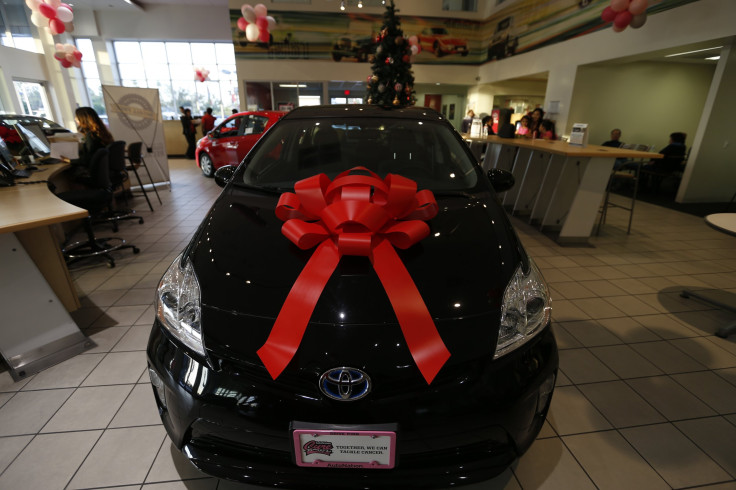A Record Year For US New-Auto Sales: Americans Bought Nearly 17.5 Million Vehicles, Beating 2000’s Record

Solid December car sales pushed the U.S. auto industry to a new all-time record in 2015 as low borrowing rates, falling unemployment and low gas prices sent 17.47 million new cars, SUVs and trucks into customers’ hands, a 6 percent increase from 2016. Automakers delivered about 68,000 more cars last year than they did in the last record year in 2000.
Pushing the tide has been rapidly growing demand for pickup trucks and SUVs, which represented about 60 percent of the 1.64 million cars purchased in December.
“Consumers continue to buy new vehicles in almost every SUV and truck segment,” Akshay Anand, automotive analyst for Kelley Blue Book, said in an email. “It’s clear consumers brushed off the small [0.35 percent] Fed rate hike in December and barring unforeseen economic circumstances, 2016 should continue the trends we’ve experienced in 2014 and 2015.”
Every major auto company saw sales growth last year, led by a percentage-increase tie between Fiat Chrysler, which owns the powerhouses Jeep and Nissan, whose core sedans and small SUVs helped push sales up 7 percent.
In terms of raw volume, General Motors broke 3 million annual sales for the first time, a 5 percent rise from 2014, while Ford came in second with nearly 2.5 million deliveries. Ford’s F-Series pickup truck maintained its 34-year streak as the No. 1 best-selling passenger vehicle in America. (The F-Series includes a small number of heavy-duty trucks used for stuff like ambulances and waste haulers.)
Some forcasters, including TrueCar.com and Ford Motor, believe 2016 could see yet another record broken, but that could come at a cost as the competitive climate gets more heated. A growing number of post-lease vehicles entering the market and a modest knock-on effect from increasing borrowing costs — the Fed rate could hit 1 percent by the end of the year — might tap the brake on some sales.
Incentive spending, which is how much automakers lose by offering deal-sweeteners like rebates, have ticked up by nearly 4 percent since December 2014, according to TrueCar.com. Automaker incentive discipline, as it’s known in the industry, will be closely watched to see if companies are going to sacrifice more profits in order to keep sale churning.
“We’re seeing a rise in incentive spending and it will be interesting to see what the automakers strategy will be this year to address that,” said Michelle Krebs, a senior automotive analyst for Autotrader.
© Copyright IBTimes 2024. All rights reserved.












